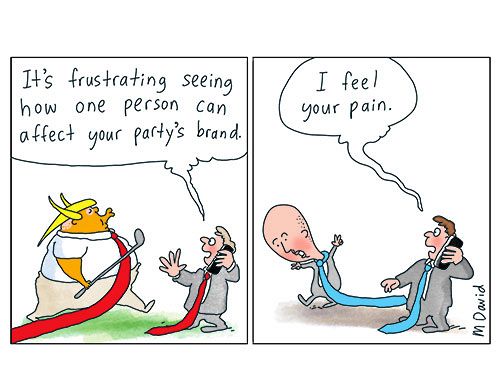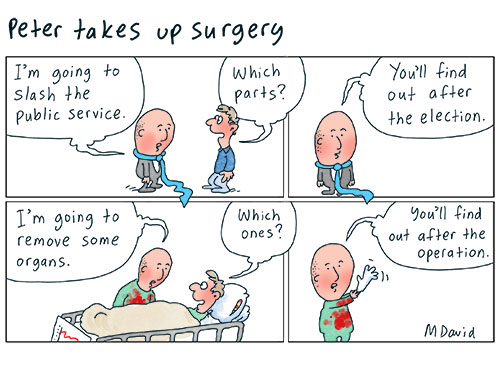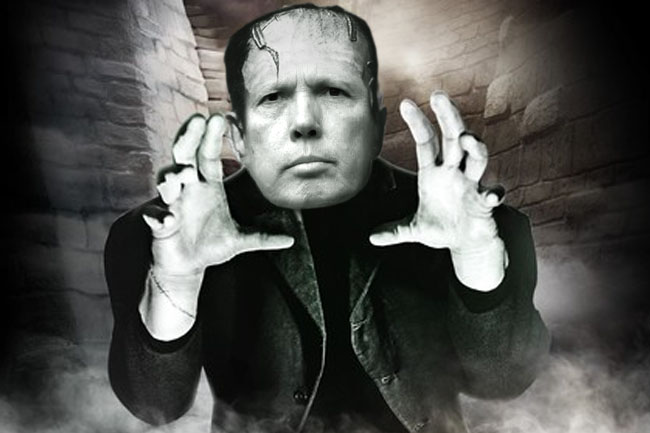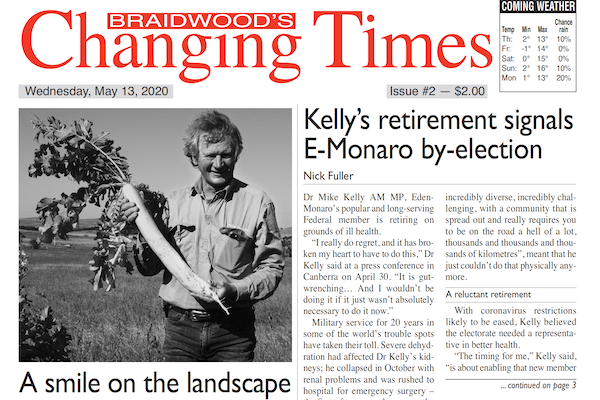Opposition Leader Peter Dutton has pledged to revive the Coalition as an election-winning machine, but is this a party worth anyone's vote, asks Dr Robin Tennant-Wood.
*This article was highly commended in the IA Writing Competition Most Compelling Article category.
*Also listen to the audio version of this article on Spotify HERE.
IN MARY SHELLEY’S classic novel, Frankenstein, the eponymous scientist labours in his lab obsessively trying to create a new species that will come to life and reveal the secrets of creation itself. Instead, Frankenstein creates a monster from an assemblage of old body parts and weird chemicals.
Following the Aston by-election last week, won by Labor’s Mary Doyle, Opposition Leader Peter Dutton has morphed into a latter-day Victor Frankenstein, announcing to media and downcast party faithful at their Aston post-election party, that his aim is to turn the Liberal Party into an “election-winning machine by 2025”.
An election-winning machine.
Not an organisation that listens and responds to voters. Not an organisation that reflects community values. Not even a party whose gender composition mirrors that of the Australian population or has a vision for the future. No. A machine. One that wins elections.
Like Frankenstein, Dutton thinks he can create life from an assemblage of the riven rump of a party that has now lost every mainland state. He’ll then add some reactive statements about government policy and... boom! New life!
Since the two-party system evolved in about the 1920s to become the recognised and accepted way our parliament is organised, the government benches have been held by either the Labor Party or the Coalition of the Liberal (formerly United Australia) Party supported by, until 1975, the Country Party, which then changed its name to the National Party and is now known simply as the Nationals. Under this system, politics became – and remain – a zero-sum game: a win for one is, by definition, a loss for the other.
Over the past few years two things have happened to position the Liberal Party on the downward slope.
Firstly, the hard Right faction of the party has dominated, with an increased modelling of its policies on that of the American Republican Party. Former Prime Minister Scott Morrison’s buddying up to former U.S. President Donald Trump, posing for photos like a couple of gormless schoolboys on their first footy trip, was merely the outward expression of a darker force within his party that ultimately backfired.
Embracing the rhetoric of the American alt-Right was a baseless strategy. Moreover, policies such as gun control, social security and universal health care, noticeably missing from – and in fact, opposed by the Republican policy platform – are part of our modern social fabric and the Australian people are not about to relinquish them. As Trump and Morrison both discovered, voters on both sides of the Pacific want substance in government, not just a populist leader big on photo ops and nationalist hype but short on political intelligence and basic integrity.
While the religious Right may remain a significant voting bloc in the U.S., Australia maintains its secularity strongly and the pushback was evident from the moment the Pentecostal Morrison ousted the moderate Malcolm Turnbull from the PM’s office.
Secondly, the emergence of the so-called “teal Independents”, most of whom are women and many of whom fled from the Liberal Party when it lurched further to the Right, has shifted both power balance and mood in the Parliament. Smart, educated, progressive women with their feet firmly planted in the communities they represent, rather than the party system, their numbers, along with the Greens, are now sufficient to put pressure on not just the legislative, but on the two-party system itself.
Women now comprise 38% of the House of Representatives and 57% of the Senate – the closest the Australian Parliament has ever come to gender equity. However, while the Labor Party’s total female representation across the combined two houses of parliament is 52%, the combined Liberal-National Coalition’s is less than 25% — an increasingly irrelevant boys’ club.
While the remnants of the parliamentary Liberal Party bicker amongst themselves, the real opposition in the Parliament is being provided by the Greens and Independents. Crossbenchers in the House of Representatives now occupy 17 seats – two more than the Nationals hold – and it is from those members that the Government is getting questioned and being held to account. But Dutton has no interest in questioning the Government, he just wants to win elections with a machine.
Rather than trying to create an election-winning machine, Mr Dutton should be looking at how his party can better serve the electorate. We don’t vote for machines, we vote for people. We vote for policies that support our communities, represent our interests, enhance our well-being and promote our communal values.
Until and unless Dutton and his party realise this, his machine has no hope of winning anything. Remember, instead of discovering the secrets of life, Frankenstein and his monster both perished.
*This article is also available on audio here:
Dr Robin Tennant-Wood is a former lecturer in political science at the University of Canberra and freelance writer and researcher. You can follow Robin on Twitter @rtennantwood.
Related Articles
- Lack of media scrutiny helped the Liberals lose their way
- Perrottet’s Sydney-centric stance sums up Liberals' elitist worldview
- Liberal Party little more than a factional fight club
- All traces of Liberal blue wiped off mainland
- Lockdown fee scam yet another Liberal lurk
 This work is licensed under a Creative Commons Attribution-NonCommercial-NoDerivs 3.0 Australia License
This work is licensed under a Creative Commons Attribution-NonCommercial-NoDerivs 3.0 Australia License
Support independent journalism Subscribe to IA.














